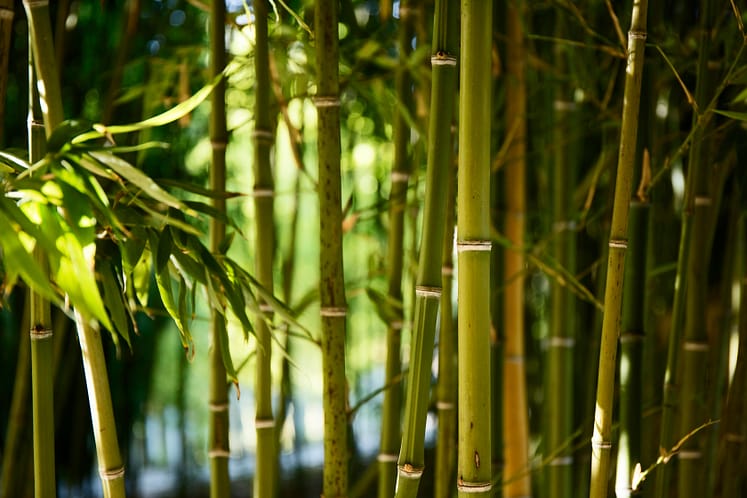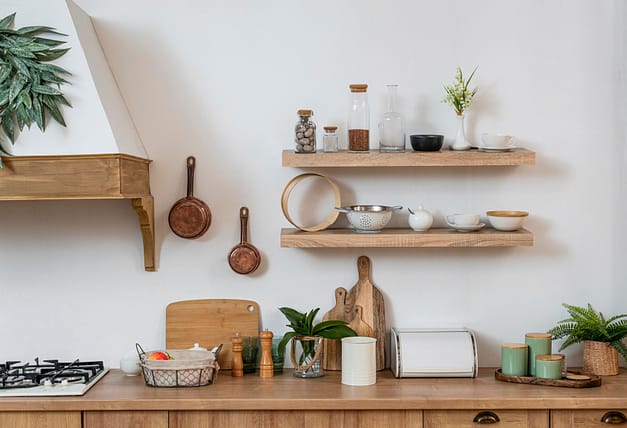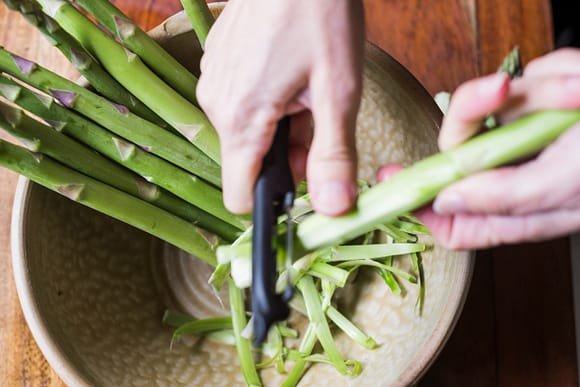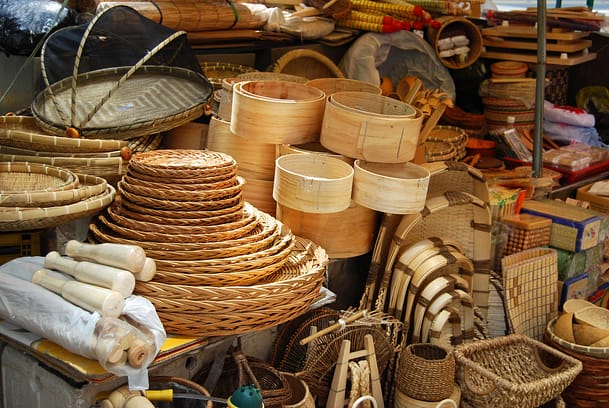
1. Introduction
In today’s world, where sustainability and eco-friendliness have become essential considerations, bamboo has emerged as a versatile and renewable resource that holds great potential for families. Its rapid growth, durability, and versatility have made it a popular choice in various industries and households.
In this blog post, we will explore how can bamboo be a source for the family as a sustainable source, ranging from home decor and furniture to household products, clothing, and even renewable energy. By embracing bamboo, families can contribute to a greener lifestyle while enjoying the many advantages this remarkable plant has to offer.
Table of Contents
2. Bamboo for Home Decor and Furniture
Bamboo holds a unique aesthetic appeal that can enhance the ambiance of any living space. It’s natural textures and earthy tones add a touch of elegance and warmth. From bamboo chairs and tables to bed frames and shelves, the options for incorporating bamboo furniture into your home are endless. Moreover, bamboo’s durability and flexibility ensure that these pieces can withstand daily wear and tear while providing comfort and functionality. By opting for bamboo furniture, families can create a sustainable and stylish living environment.

In addition to furniture, bamboo can be used for various home decor elements such as blinds, curtains, and wall coverings. These bamboo-based decor items not only add a natural and eco-friendly touch to your home but also provide excellent insulation and privacy. Bamboo’s lightness and strength make it a preferred choice for creating room dividers and partitions, allowing for flexible and versatile living spaces.
3. Bamboo as a Sustainable Building Material
Bamboo’s remarkable properties extend beyond home decor and furniture; it can also be used as a sustainable alternative to traditional building materials. Its strength-to-weight ratio rivals that of steel, making it an excellent choice for constructing sturdy and resilient structures. Bamboo houses, schools, and community centers have emerged as eco-friendly solutions, combining affordability, sustainability, and architectural beauty.

Furthermore, bamboo’s rapid growth makes it an ideal material for reforestation efforts. Unlike traditional timber harvesting, bamboo can be harvested without causing deforestation since the plant regenerates quickly. By using bamboo as a building material, families can actively contribute to preserving forests and mitigating climate change.
To ensure the longevity of bamboo structures, proper treatment and maintenance techniques need to be implemented. Bamboo should be appropriately treated to protect against pests and moisture, extending its lifespan. Regular inspections and maintenance, such as reapplying protective coatings, will ensure that bamboo structures remain in optimal condition for years to come.
4. Bamboo for Household Products
When it comes to household products, bamboo offers a plethora of options. Bamboo kitchenware, utensils, and storage solutions have gained popularity due to their natural beauty, durability, and functionality. Bamboo cutting boards, for instance, are not only resilient but also gentle on knives, making them an excellent choice for any kitchen. Bamboo storage containers provide a sustainable alternative to plastic, helping families reduce their environmental impact.
Bamboo toothbrushes have become increasingly popular, replacing plastic alternatives that contribute to plastic waste.
Try Browsing and Buying Products —> Bamboo Products

Bamboo’s natural antimicrobial properties make it an ideal material for oral hygiene products. By making a simple switch to bamboo toothbrushes, families can significantly reduce their plastic consumption and promote sustainability.
5. Bamboo for Clothing and Textiles
Bamboo has also found its way into the fashion industry, revolutionizing clothing and textiles. Bamboo fabric is known for its softness, breathability, and moisture-wicking capabilities, making it an excellent choice for clothing. Bamboo clothing offers comfort and versatility, suitable for various weather conditions. Whether it’s bamboo t-shirts, socks, or even underwear, families can enjoy sustainable and comfortable fashion choices.

Additionally, bamboo textiles are naturally hypoallergenic, making them suitable for individuals with sensitive skin. Bamboo’s natural properties make it resistant to bacteria, molds, and mites, providing a cleaner and healthier option for clothing. Moreover, bamboo cultivation requires significantly less water compared to conventional cotton farming, reducing the strain on water resources and supporting sustainable agriculture.
6. Bamboo as a Renewable Energy Source
Beyond its use in everyday items, bamboo holds potential as a renewable energy source. In rural communities, bamboo biomass can be harnessed for energy production, such as generating heat or electricity. Bamboo energy offers numerous benefits, including reduced greenhouse gas emissions and increased energy independence.

Bamboo biomass can be converted into charcoal or biofuels, providing clean and sustainable energy sources. Additionally, bamboo’s rapid growth rate makes it an excellent candidate for biomass production, as it can be harvested and regrown within a few years. By utilizing bamboo as a renewable energy source, families can reduce their carbon footprint and contribute to a greener future.
7. Bamboo in Traditional Medicine
Beyond its applications in home decor, construction, and everyday products, bamboo has also played a significant role in traditional medicine. In various cultures, bamboo has been revered for its medicinal properties and used to treat a range of ailments.

The young shoots of bamboo are known for their rich nutritional content and have been used to boost the immune system and promote digestion. Bamboo extracts have been utilized for their antioxidant and anti-inflammatory properties, aiding in the management of conditions such as arthritis and joint pain. Additionally, bamboo charcoal has been used in poultices and topical treatments to draw out toxins and promote healing.
While traditional medicine practices should always be approached with caution and under the guidance of healthcare professionals, exploring bamboo’s potential in natural remedies adds another dimension to its already impressive repertoire.
8. Bamboo in Arts and Crafts
Bamboo’s versatility extends beyond its practical applications; it also plays a significant role in the world of arts and crafts. Its natural beauty and strength make it a favored material for artisans and craftsmen. Bamboo can be skillfully woven into baskets, lampshades, and decorative items, showcasing its intricate textures and unique patterns. Additionally, bamboo can be carved, creating stunning sculptures and intricate designs.

Whether it’s a delicate bamboo wind chime or a handcrafted bamboo artwork, incorporating bamboo into arts and crafts projects allows families to appreciate the plant’s aesthetic qualities while supporting sustainable and eco-friendly creative endeavors. Engaging in bamboo-related arts and crafts provides an opportunity for families to explore their creativity while connecting with nature.
9. Bamboo as a Source of Income
In addition to its various sustainable applications, bamboo can also serve as a lucrative source of income for families. With its fast growth and high demand, bamboo cultivation presents an opportunity for farmers and entrepreneurs to establish bamboo plantations. The harvested bamboo can be sold as raw material to industries involved in furniture, construction, or textile production. Additionally, individuals can explore bamboo-based entrepreneurial ventures such as handmade bamboo crafts, bamboo charcoal production, or bamboo-based artisanal products.
By harnessing the economic potential of bamboo, families can not only contribute to their financial stability but also promote sustainable livelihoods within their communities. Bamboo offers a unique opportunity to combine environmental consciousness with entrepreneurship, creating a win-win situation for both the family and the planet.
Conclusion
Bamboo’s versatility and sustainability make it an invaluable resource for families seeking eco-friendly alternatives. From home decor and furniture to household products, clothing, and renewable energy, bamboo offers a wide range of benefits. By embracing bamboo, families can contribute to a greener lifestyle while enjoying the aesthetic appeal, durability, and functionality it brings.
Let us embrace this remarkable plant and support businesses that prioritize sustainability, taking steps towards a more sustainable and environmentally conscious future for our families and the planet as a whole. By making conscious choices and incorporating bamboo into our daily lives, we can create a positive impact on the environment and inspire others to join the movement towards a more sustainable future.
FAQs
Is bamboo a sustainable resource?
Yes, bamboo is highly sustainable due to its rapid growth and minimal need for resources.
Can bamboo be used in construction?
Yes, bamboo is a strong and durable material that can be used in construction projects.
Are bamboo textiles suitable for sensitive skin?
Yes, bamboo textiles are hypoallergenic and gentle on the skin, making them suitable for sensitive individuals.
How can bamboo be used in landscaping?
Bamboo can be used as a privacy screen, windbreak, or decorative element in landscaping projects.
What is the environmental impact of bamboo cultivation?
Bamboo cultivation has a positive environmental impact as it helps prevent soil erosion, absorbs carbon dioxide, and promotes biodiversity.

I appreciate the real-life examples you shared. Thanks for making the content relatable!